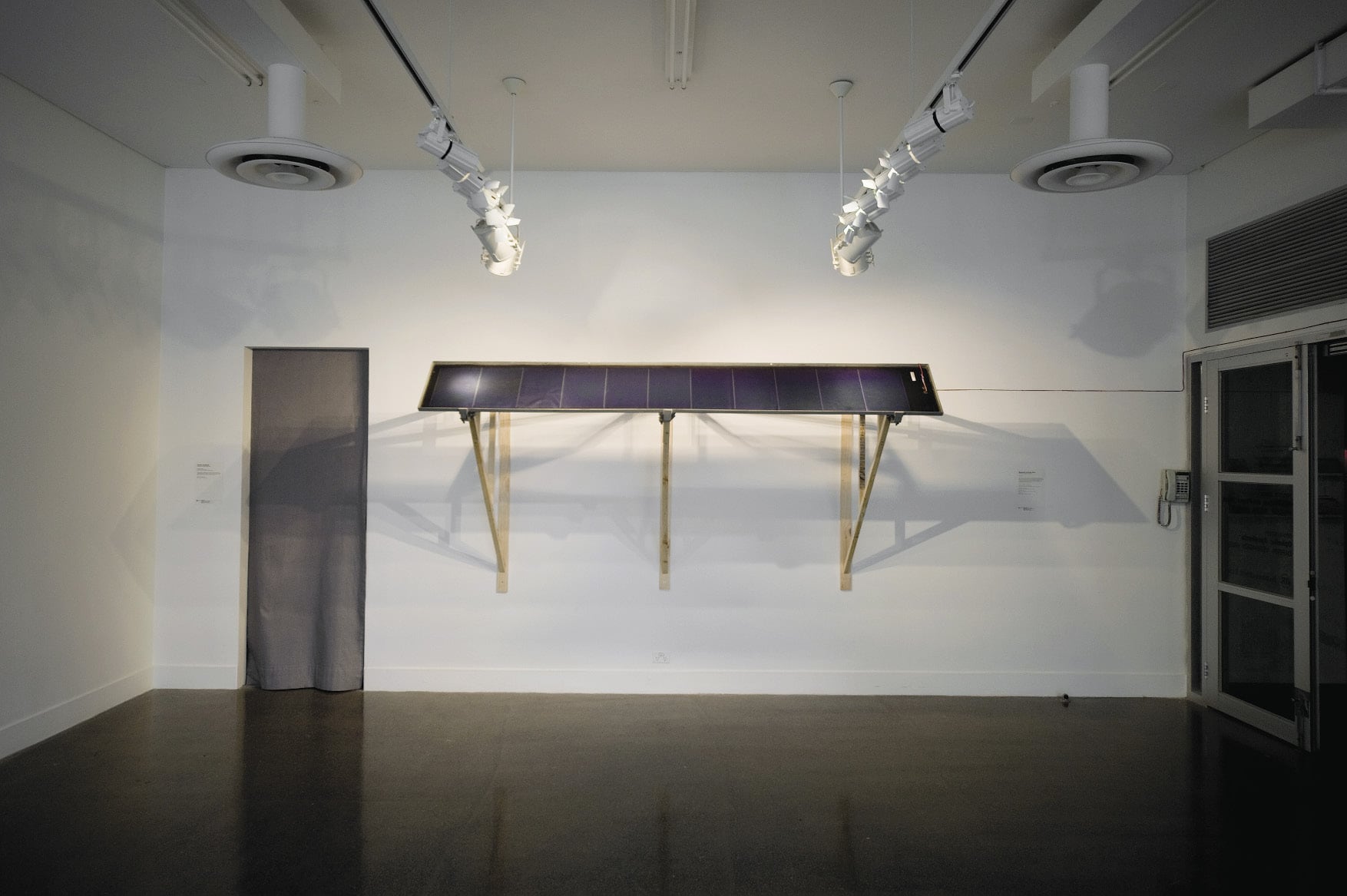
Kosuke Ikeda
Melbourne Art-Power Plant
RMIT Project Space
20 July – 16 August 2012
Although at first glance Kosuke Ikeda’s Melbourne Art Power Plant may have looked like a room filled with boys’ toys, it was more like an alternate space for evoking a quiet revolution in the way we think about dirty energy. The exhibition was a grouping of hand-made constructions that dealt with the relationship between the man-made and our natural environment, which engaged a total sensorial experience. The hand-made power installations created from found materials established a dichotomy between the simplicity of sustainability and our complex relationship with energy and nature. The exhibition absorbed the viewer into a multi-sensory experience by involving sound, site and touch.
The devastation caused by Japan’s 2011 earthquakes and their ongoing impact on the local and international community has informed Ikeda’s recent practice, which is currently concerned with an investigation into alternate micro power generation and the exploration of the interchange between the human and the ecological. In Melbourne on a three-month residency program hosted by Tokyo Wonder Site, Asialink and RMIT’s International Artist in Residency program, Ikeda worked with local artists and engineers in order to continue his research into new visions of energy. He developed works based around propositions of experimental power generation and water circulation. In this case, his exhibition considered our interaction with and dependence on electrical power grids.
Looking more like a garage workshop than an exhibition space, Ikeda investigated how the smallest gesture or change in environmental ideology can result into a much more telling story. As Ikeda explained:
I’m dealing with very tiny natural phenomena, like the fall of water drops. But at the same time I’m here I try to amplify the sound [of that water drop] and you can feel some kind of vibration.1
Forming one part of the installation was an upside-down, disbanded bicycle that leached gadgets and wires; these were attached to a record player that was mounted to the wall. Demanding human power, the rotation of the pedals powered the record player that played a Kraftwerk album. On the adjacent wall were solar panels that had a group of gallery lights beaming on them. On closer investigation, it became evident that the energy created from the lights directed onto the solar panel powered one light globe in the gallery manager’s office. Upon realising the effort it took to generate enough power for only one light globe, and taking into consideration the rest of the installation, it became apparent that, as Dr Kristen Sharp states in the accompanying exhibition catalogue, Ikeda wished to explore ‘the “invisible” production, consumption and environmental impact of human activity’.2
Kosuke Ikeda’s installation dealt with hard truths and telling realities of the environmental impact of human activity in a poignant and also entertaining way. The message, although serious, was told through some pretty quirky devices and made for an engaging, cross-cultural and multi-disciplinary experience.
Olivia Poloni is a freelance writer and curator who has recently relocated back to Melbourne after two years living in Cologne.
